I felt like I had stumbled into an 18th century cabinet of curiosities — or some sort of gentleman/explores club — filled to the brim with artifacts that its members had gathered as they set out to see and “discover” parts of the world before we became connected by planes, trains, automobiles — and the Internet.
From shrunken heads to Victorian-era taxidermy — it seemed that every piece that the museum had acquired was on display with their acquisition/information tags still attached and visible to the viewer.
Both an assault on and a delight for the senses, the Pitt Rivers Museum in Oxford is unlike any other museum you’ve visited (seriously, I have been in museums all over the world, and none compare to this one).
Nestled behind the Oxford University Museum of Natural History, this must-visit extraordinary collection is a treasure trove of anthropology and archaeology. With over 500,000 (!) artifacts from around the world, the museum offers a glimpse into the creativity, ingenuity, and diversity of human cultures.
Established in 1884 by Augustus Pitt Rivers, the museum’s claim to fame is its unique organizational style. Unlike traditional museums, artifacts here are grouped by type rather than region. This thematic display allows visitors to compare how different cultures approached similar challenges, such as crafting tools, designing clothing, or creating musical instruments.
10 fascinating artifacts to see at the Pitt Rivers Museum
There are literally hundreds of thousands or artifacts to look at — make sure you have some real time to spend wandering amongst the display cases. Here are ten highlights to piques your interest and give you something to look out for during your visit.
1. Shrunken Heads
Origin: Amazonian tribes of Ecuador and Peru.
Why these are special: These eerie artifacts are created by removing and shrinking the skin of human heads. They were used in ceremonial practices and to intimidate enemies.
Tip: Look closely to see the intricate sewing of the lips and facial features.
2. The Witch in a Bottle
Origin: England, 17th century.
Why this is special: This artifact is said to contain a witch, sealed to prevent her escape.
Tip: Ask a curator about the legends surrounding this intriguing artifact.
3. Japanese Noh Masks
Origin: Japan, Edo period.
Why these are special: These exquisitely crafted masks are used in traditional Noh theatre to convey complex emotions — these are historic versions, but masks like these are still used today in modern Noh theatre performances.
Tip: View the masks from the front and the sides and notice how the expressions change depending on the angle.
4. The Haida Totem Pole
Origin: British Columbia, Canada.
Why this is special: Carved by the Haida people of Canada’s Pacific Coast, this towering totem pole tells important stories of lineage and mythology.
Tip: Look up so you can see the intricate details that tell the pole’s history.
5. Feathered Capes of Hawaii
Origin: Hawaii, Polynesia.
Why these are special: Made from thousands of tiny bird feathers, these capes were symbols of power and prestige for Hawaiian chiefs.
Tip: Check out the meticulous craftsmanship that has kept these intact for hundreds of years.
6. Kayan Long-Neck Adornments
Origin: Myanmar
Why these are special: The neck rings worn by Kayan women are both a cultural symbol and a fascinating physical phenomenon.
Tip: Read the descriptions in the museum to learn about how these adornments impacted anatomy and local cultural identity.
7. Tibetan Skull Cups
Origin: Tibet, used in Buddhist rituals.
Why these are special: Made from human skulls, these historic cups were used in Buddhist ceremonies.
Tip: Look closely, as the intricate engravings often depict deities or sacred symbols.
8. Ashanti Gold Weights
Origin: Ghana
Why these are special: These small, intricately designed brass weights were used to measure gold dust, serving as currency in West Africa.
Tip: Try to decipher the symbolic designs on each weight, which often tell stories or proverbs.
9. The Snow Goggles
Origin: Inuit tribes of the Arctic.
Why these are special: Made from carved bone or wood, these unique goggles protect against snow blindness by narrowing the field of vision.
Tip: See if you can guess how these were made once you examine the narrow eye openings.
10. The Mummy Portraits
Origin: Egypt, 1st-3rd centuries AD
Why these are special: These strikingly lifelike portraits were attached to mummies and are considered precursors to modern portraiture.
Tip: Note the realistic eyes, which seem to follow you as you move around the display.
Tips for visiting the Pitt Rivers Museum
Visit early in the morning or late in the afternoon to avoid the crowds — especially on weekends. If you can visit during the week, I highly recommend.
Bring a flashlight — the museum is intentionally dimly lit, so a small flashlight can help you view the intricate details of artifacts.
Talk to the staff! The museum's knowledgeable curators and guides are eager to share facts and stories about the artifacts.
The dense displays can be overwhelming (but in a really good way), so give yourself at least 2-3 hours to explore.
Plan your visit around a workshop or lecture. The museum often hosts events where experts discuss topics like archaeology, anthropology, or specific collections.
Plan your visit
Address: South Parks Rd, Oxford OX1 3PP, United Kingdom
Admission: Free
Hours: Open daily — check the official website for opening times and closures.
Keep reading!
Meet The Author
Lindsay Shapka is an avid traveler and the creator of The Anthrotorian — a website dedicated to sharing travel tips, stories about adventures, culture quirks, artists you should know, fascinating bits of history, and more!
She is also an artist, marketing specialist, editor, and freelance writer who has work featured on websites, blogs, and in magazines like National Geographic Traveler.
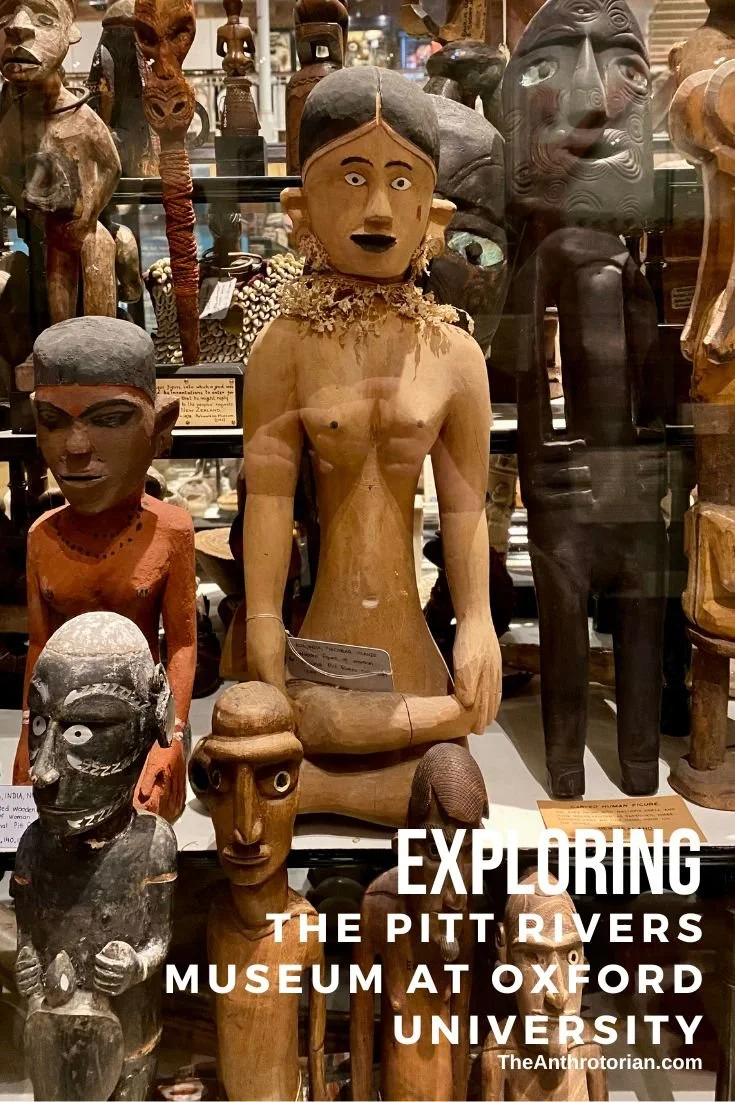
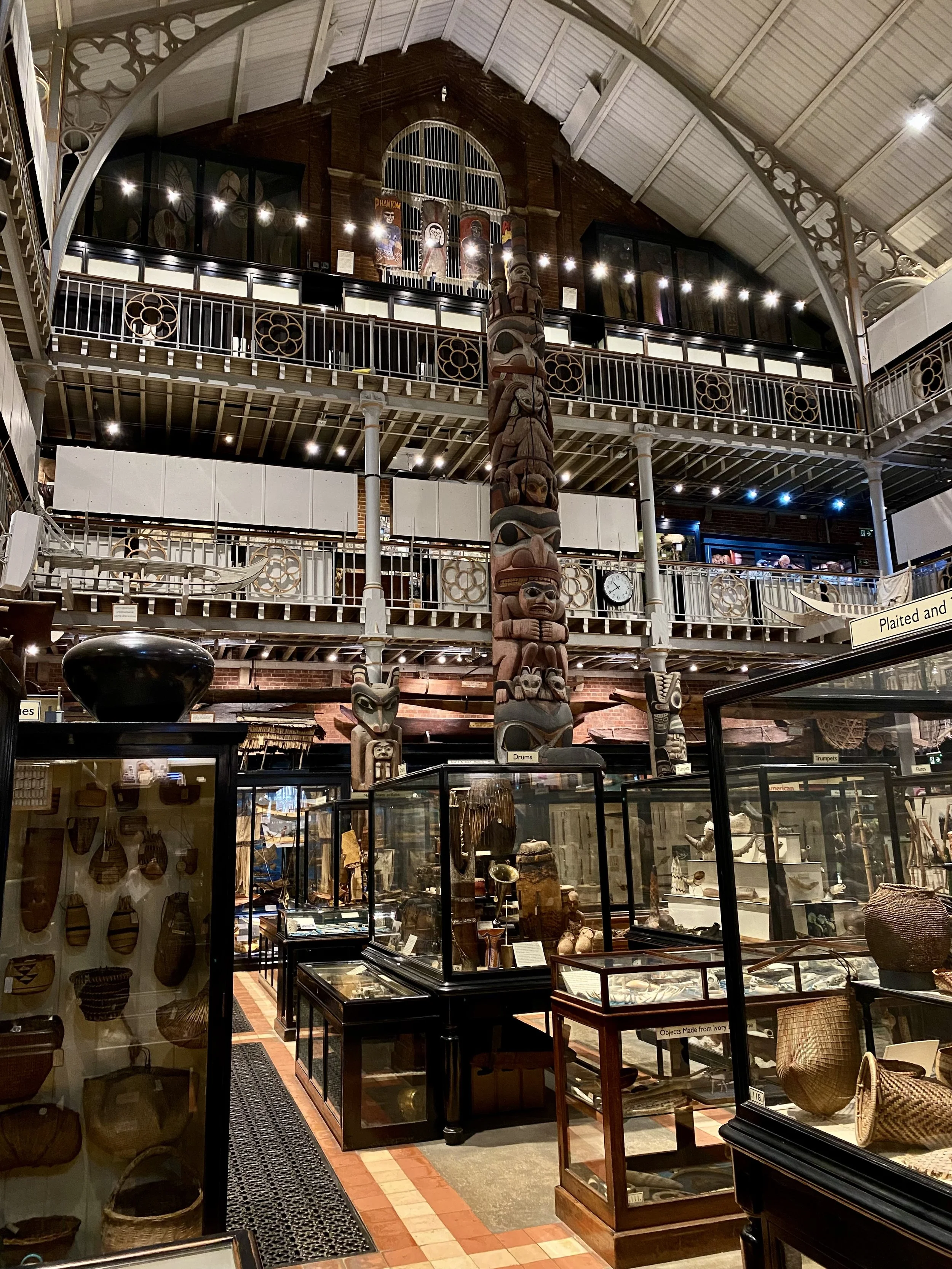


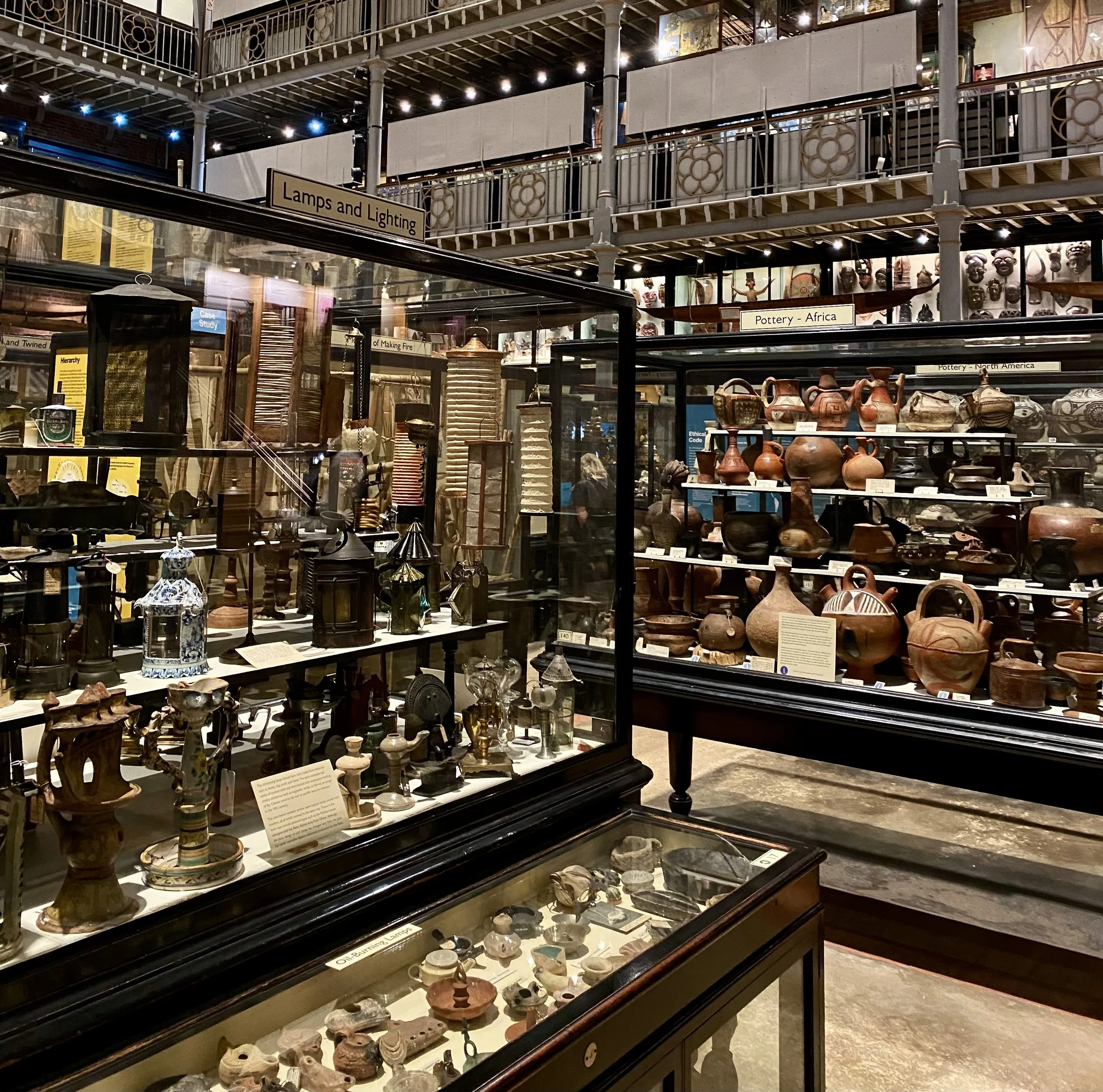
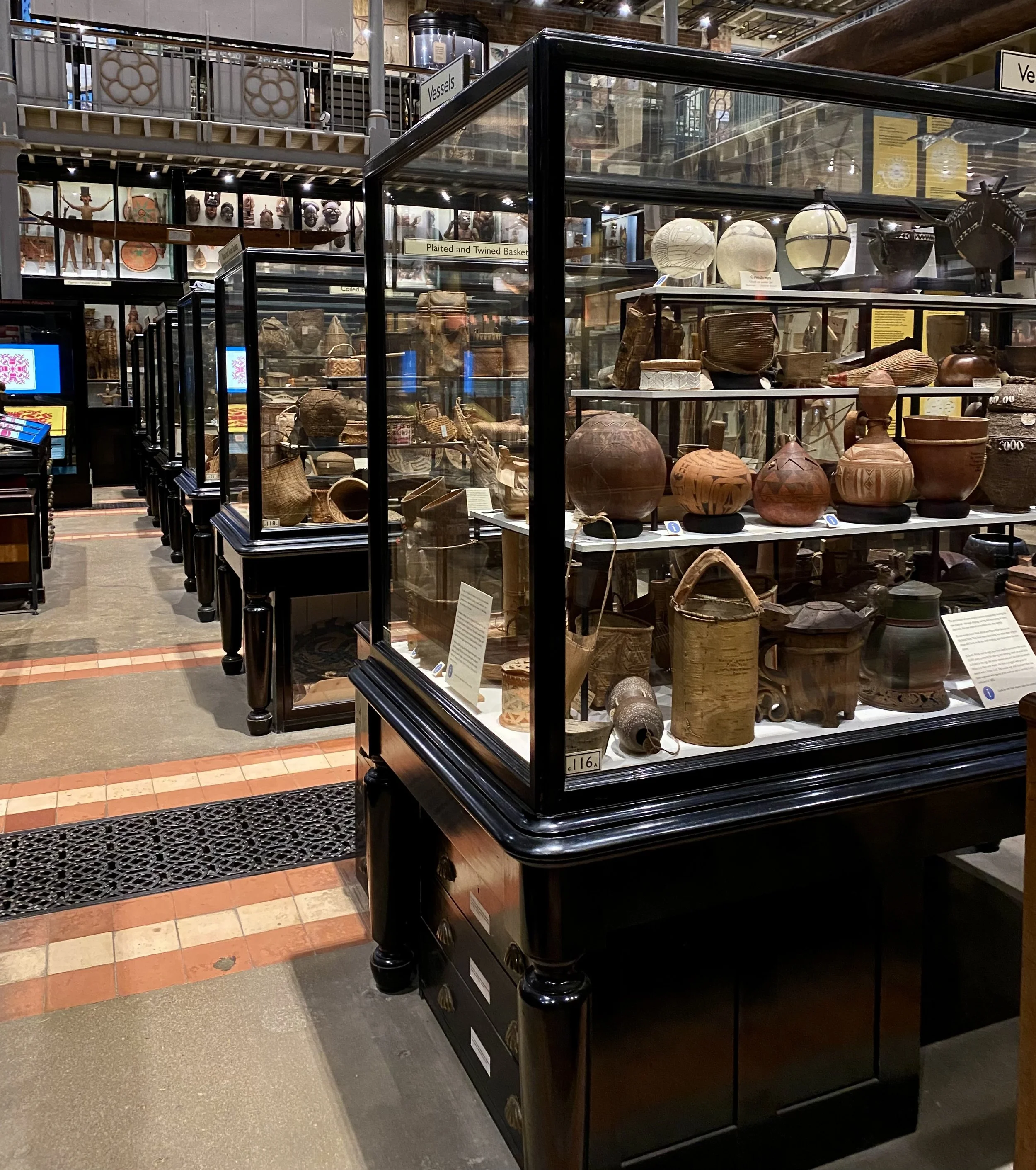



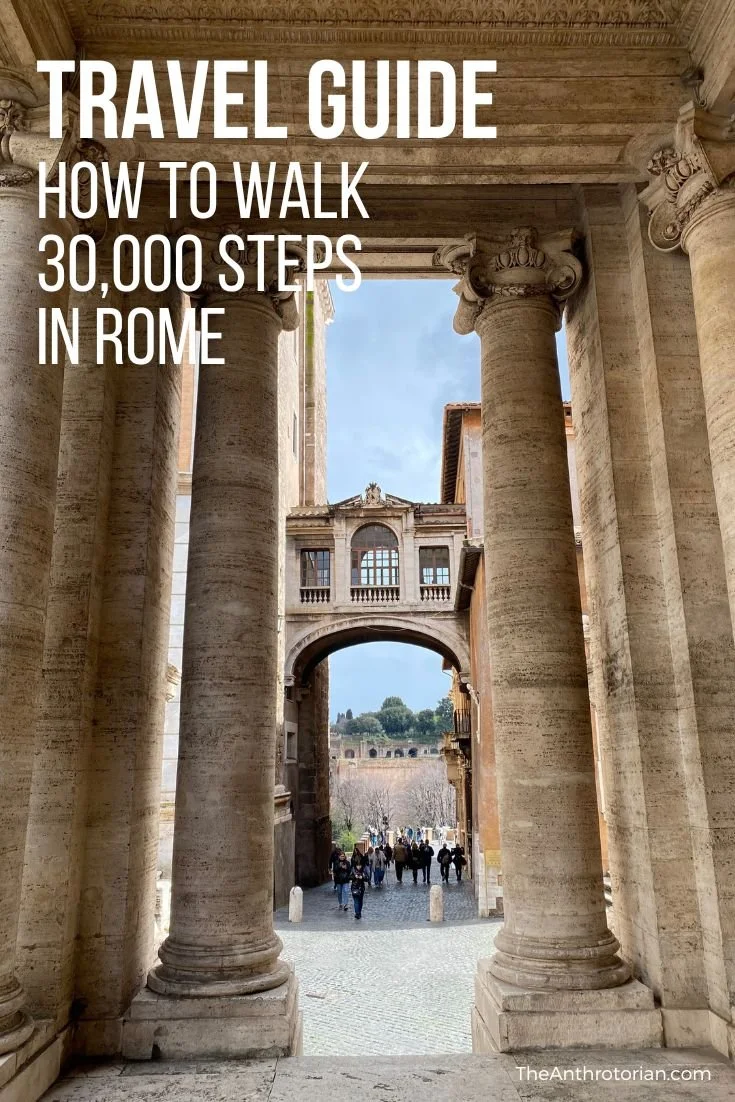










If the last few years of travel has taught us anything, it is that airports are busier than ever, and both they, and the airlines, are struggling to keep up with the demand.
Throughout the recent summer and holiday seasons, we were bombarded with images and videos of stacks of lost luggage left in airports all over the world. If you are anything like me, it has made checking a bag seem like a risk that I am not willing to take — especially if I am going for a short trip and don’t want to be without my clothing, etc. for even a day.